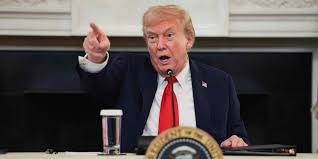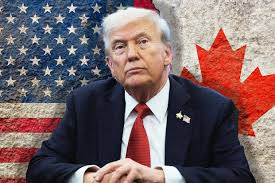In a dramatic development in the two-year conflict between Israel and Hamas, former U.S. President Donald Trump announced on October 8, 2025, that both parties had agreed to the “first phase” of his proposed Gaza peace plan, marking what many view as a potential turning point in the hostilities.
In a post on his platform Truth Social, Trump stated, “I am very proud to announce that Israel and Hamas have both signed off on the first Phase of our Peace Plan. This means that ALL of the Hostages will be released very soon, and Israel will withdraw their Troops to an agreed-upon line as the first steps toward a Strong, Durable, and Everlasting Peace.
Key Provisions of the First Phase
While many details remain to be clarified, the publicly stated components of this first phase include:
- Full release of all living Israeli hostages held by Hamas, to be completed in the immediate days ahead.
- Withdrawal of Israeli troops from designated areas, to be pulled back to an agreed line inside Gaza.
- Prisoner exchange arrangements, with Hamas releasing hostages while Israel releases Palestinian prisoners.
- Humanitarian access and aid flow into Gaza, alongside assurances of ceasefire implementation, are also included as elements of the deal
However, the agreement stops short of resolving deeper and more contentious issues — such as Hamas disarmament, governance of Gaza, and the post-war administrative structure.
Hamas, in its response, affirmed that it would comply with the terms but stressed that other parties must ensure full implementation by Israel without evasion or delay.
Reactions: Israel, Hamas & Global Responses
Israeli Prime Minister Benjamin Netanyahu welcomed the announcement and vowed to bring it to his Cabinet for formal approval. He expressed gratitude to Trump and his team, stating, “With God’s help, together we will bring them all home.”
Israel’s military also issued warnings — particularly cautioning against returning to northern Gaza or entering areas where troops remain stationed, citing the ongoing risk of conflict.
In Gaza, reactions were mixed. Some residents voiced cautious optimism, hoping the ceasefire will deliver relief after prolonged bombardment, destruction, and a humanitarian crisis. Others remained skeptical, recalling past ceasefire deals that collapsed
Internationally, major leaders and the UN welcomed the development as a hopeful step. The United Nations emphasized that all sides must abide by the agreement, urging unimpeded humanitarian access and protection of civilians
Mediators from Egypt, Qatar, and Turkey — who have played crucial roles in facilitating talks — were also credited by Trump for helping bring the parties to an agreement
Unresolved Questions & Points of Fragility
Though hailed by many as historic, the agreement remains tenuous, with several critical issues still unsettled:
- Implementation mechanisms: The timelines for troop withdrawal and hostage exchanges are not fully defined, and whether Israel will fully comply remains to be seen
- Post-war governance: Who will administer Gaza once hostilities halt? Will Hamas remain in power, or will an interim administration be appointed?
- Demilitarization of Hamas: Whether Hamas will disarm is a central demand by Israel, and there is sharp disagreement on this point
- Durability of peace: Past ceasefires have ruptured. The fragility of the truce, fluctuations in trust, and pressure from extremist factions could threaten the deal’s endurance
Analysts caution that the first phase is more of a test — if both sides follow through, it could pave the way for deeper steps; but failure could reignite war.
Significance & Strategic Implications
If honored, this deal represents one of the most tangible ceasefire breakthroughs in the Gaza war to date. It could ease massive human suffering, allow reconstruction, and open a pathway to longer-term negotiations.
For Trump, this deal provides a significant diplomatic victory in the Middle East, reinforcing his profile as a dealmaker. For Israel, it offers the possibility of concluding its military operations in Gaza and bringing home hostages. For Hamas, securing recognition of a withdrawal and aid entry offers legitimacy.
Yet, achieving a durable peace demands more than symbolic agreements: it will require effective guarantees, international oversight, joint security arrangements, trust rebuilding, and addressing the root issues that sparked the conflict.
What Happens Next
- Netanyahu is expected to convene his cabinet for approval. Once approved, troop withdrawals and hostage exchanges would commence.
- Hamas has indicated a 72-hour window post-approval to begin releasing hostages
- Trump hinted at a possible trip to Egypt in the coming days to further press for implementation and monitor progress
- Monitoring by mediators, the UN, and regional powers will be critical to avoid lapses, ensure compliance, and build confidence over time.
In the coming hours and days, the success or failure of this first phase will be closely watched — its execution will determine whether this is a fleeting lull or the opening move toward a broader, lasting peace in Gaza.













